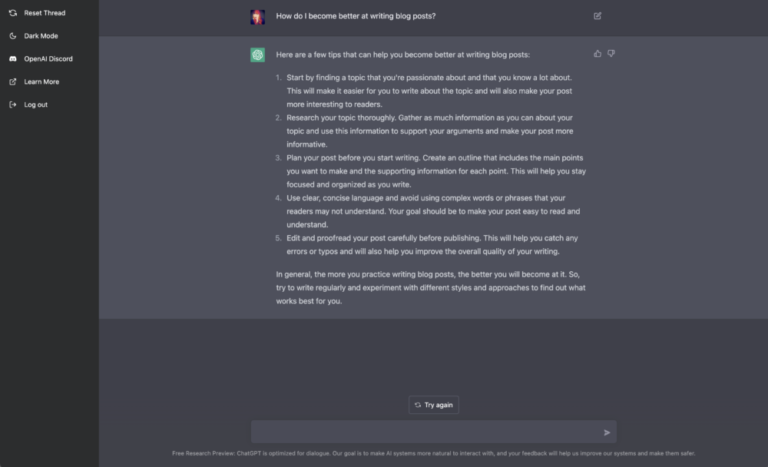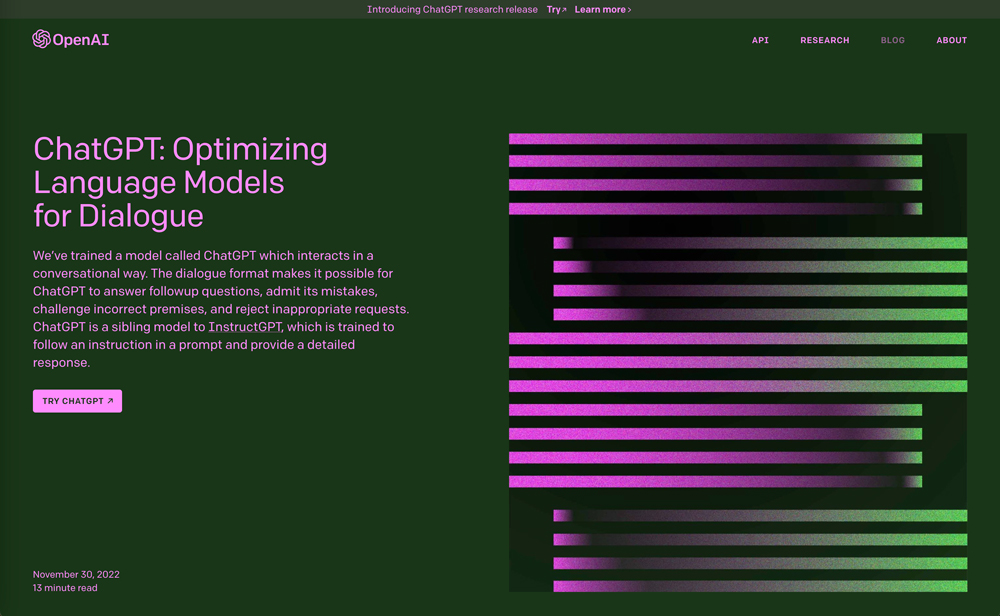You may have heard of ChatGPT through the media coverage of its capabilities and potential uses in various industries such as natural language processing, language translation, text summarization, and building conversational systems.
Most people know about ChatGPT through its parent model GPT-3 and the OpenAI company. OpenAI is a research company that specializes in artificial intelligence and machine learning, and they released GPT-3 in June 2020. Since then, there has been a lot of buzz and discussion in the tech community about the capabilities and potential of GPT-3 and its versions like ChatGPT.

Screenshot of ChatGPT interface
What is ChatGPT?
ChatGPT is a large language model developed by OpenAI. It is trained on a massive amount of text data and is able to generate human-like text. This makes it suitable for a wide range of natural language processing tasks such as language translation, text summarization, and question answering.
ChatGPT is a version of the GPT (Generative Pre-trained Transformer) model developed by OpenAI. GPT is the acronym for “Generative Pre-trained Transformer” and it has several versions such as GPT-1, GPT-2 and GPT-3. GPT-3 is considered the most advanced version of GPT and ChatGPT is a specific version of GPT-3 that is fine-tuned for conversational systems.
How to Use ChatGPT
One of the primary use cases for ChatGPT is in building conversational systems, such as chatbots or virtual assistants. By providing the model with a prompt, it can generate a response that continues the conversation in a coherent and natural way.
To use ChatGPT, you’ll need to have access to the model’s API, either through OpenAI’s GPT-3 Playground or by using one of the OpenAI’s API service. Once you have access, you can input a prompt and the model will generate a response. We found it’s best to be wordy in the prelude to the question to get the best results.
You can also fine-tune the model on specific tasks or domains by providing it with a dataset of examples. This is called “few-shot learning” and allows the model to generate text that is more relevant to the task or domain.
A Powerful Tool
To use ChatGPT, you will also need to have a good understanding of the programming language you choose to use with it. Python is the most common one.
Overall, ChatGPT is a powerful tool for natural language processing and can be used to build a wide range of conversational systems. With a little bit of training and fine-tuning, it can be used to generate highly coherent and relevant text for a wide range of applications.
Please note that this is a general explanation about ChatGPT, for more specific and detailed information please refer to the official OpenAI documentation.

Screenshot of ChatGPT answering how to become better at writing blog posts
ChatGPT and other versions of GPT have generated a lot of buzz in the natural language processing community. However, there are also some concerns about GPT models, including the potential ethical and societal implications of the technology, and the fact that the models are not yet able to fully understand the context and meaning of the text they generate.
Overall, ChatGPT and GPT are considered powerful tools in the field of natural language processing and have the potential to revolutionize the way we interact with machines and computers.
Are you interested in learning about other powerful tools? Check out our software training courses.


